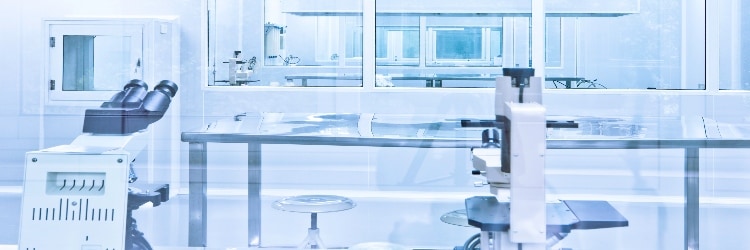Explaining the new European biocontamination standard

BS EN 17141:2020 is a new European standard giving updated guidance on how to establish and demonstrate control of airborne and surface microbiological contamination in clean controlled environments. It’s an update of BS EN ISO 14698-1 :2003 and BS EN ISO 14698-2:2003. BS EN 17141:2020 replaces both of these standards in Europe as a European standard. It should be noted that the ISO standards remain unchanged. This blog post sets out why the new standard has come about and what it covers.
The term “clean, controlled environments” covers cleanrooms, clean zones, controlled zones, clean areas and clear spaces. Clean controlled environments are used to control and limit microbiological contamination where there is a risk to product quality, patients or consumers.
There was a need for a European standard in this area because, while there’s no shortage of standards and regulatory guidelines in the regulated pharmaceutical and biopharmaceutical manufacturing sector, there is less guidance on the microbiological control of clean controlled environments.
Likewise in the healthcare and hospital sector there are EU Directives, as well as national standards and guidelines for specialized operating theatres, isolation units and immuno-compromised wards as part of infection control.
Meanwhile in the food and consumer-related industries, while there are regulations and standards on food, beverages and cosmetics, for example, there is insufficient guidance regarding microbiological control in clean controlled environments.
Controlling microbiological contamination
This new standard is for anyone working in microbiological contamination control from engineering and technical support, production, quality assurance and control to regulatory authority compliance functions.
It’s expected to have particular use in the pharmaceutical, biopharmaceutical, medical devices and other life science industries, as well as in healthcare and hospitals, food, and related applications which use clean controlled environments.
The standard gives guidance on best practice for establishing and demonstrating control of airborne and surface microbiological contamination in clean controlled environments. It describes the requirements for microbiological contamination control and provides guidance on the qualification and verification of such environments.
To establish microbiological control, it’s important to understand the risks of microbiological contamination. This is achieved by considering the sources of microbiological contamination, the associated microbiological concentrations, the likelihood of transfer and the impact on product quality, the patient or the consumer.
A formal system of microbiological control identifies, controls and monitors microbiological contamination on an ongoing basis. This is a process of continuous improvement and the principles of Plan – Do – Check – Act (PDCA) apply.
General guidance
The standard also includes a number of informative annexes that provide further guidance on biocontamination control in specific applications, and includes, for example, tables of microbiological cleanliness levels for monitoring of microbiological contamination in certain types of clean controlled environments and guidance in specific areas of microbiological control relating to the choice of environmental monitoring (EM) sampling methods, the management and trending of collected data and the role of alternative and real-time microbiological detection systems.
The standard’s annexes also cover appropriate methods for establishing control, selecting appropriate alert and action levels and target levels as necessary, and for establishing a microbiological environmental monitoring plan as part of demonstrating control of the clean controlled environment.
In summary, this new standard will provide up-to-date guidance and comprehensive information that will increase the effectiveness of the management of the risks associated with microbiological contamination. Its use will also improve efficiencies and, where applicable, provide alignment with the regulatory authority’s expectations for continued compliance and process approvals. Finally, it should be noted that, individuals who engage with the principles of the standard will develop their expertise in understanding the management of these types of risk.


